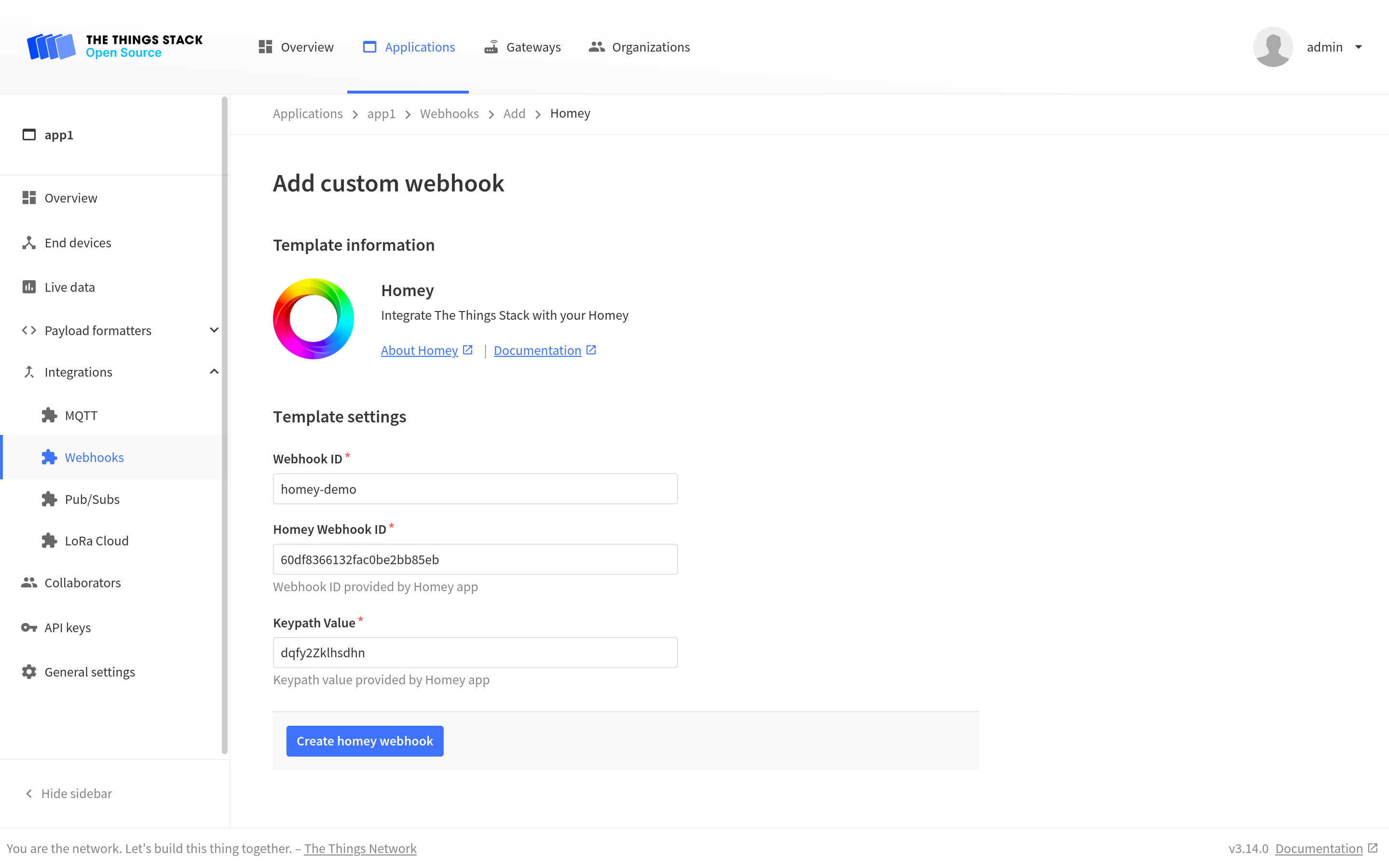Homey is a smart home hub that can be connected with practically every smart device on the market. This guide shows you how to integrate The Things Stack with a Homey application to get the best out of your LoRaWAN® data.
See Homey support page for detailed documentation.
Prerequisites
- You need to own a Homey device, such as Homey Pro.
- A user account on Homey app.
- A Homey flow set up.
Configure The Things Stack
Before you implement the Webhook integration, you first need to set up a payload formatter.
The Homey application extracts two states (state1 and state2) and two associated values (value1 and value2) from uplinks, which it then uses to trigger events. See the example payload formatter below.
Example payload formatter
function decodeUplink(input) {
// Assume 4 bytes received, e.g. 0x01, 0x9F
// state1 & state2 must be strings/ word
// value1 & value2 must be numbers
// More examples here:
// https://www.thethingsnetwork.org/docs/devices/bytes/
var data = {};
if (input.bytes[0] == 1){
data.state1 = "On";
} else{
data.state1 = "Off";
}
if (input.bytes[1] == 1){
data.state2 = "Open";
} else{
data.state2 = "Closed";
}
data.value1 = 5.2 * input.bytes[2];
data.value2 = 25 + input.bytes[3];
return {
data: data,
warnings: [],
errors: []
};
}
To see the payload formatter output (decoded_payload field contents) for input 00 01 05 1A, expand the example below.
Example payload formatter output
{
"state1": "Off",
"state2": "Open",
"value1": 26,
"value2": 51
}
To complete the Webhook integration between The Things Stack and your Homey app, you can use the Homey Webhook template.
To integrate, you need to fill in the Webhook ID with an arbitrary value, and provide the Homey Webhook ID and Keypath Value from Homey application. You can find these values by navigating to Homey application’s Settings page.

To see the values of all parameters of the Homey integration, click on the integration after you created it with the Webhook template.
Now your Homey is finally a part of your LoRaWAN network!
For details on setting up a Webhook integration with Homey using The Things Stack Custom webhook, see this link.